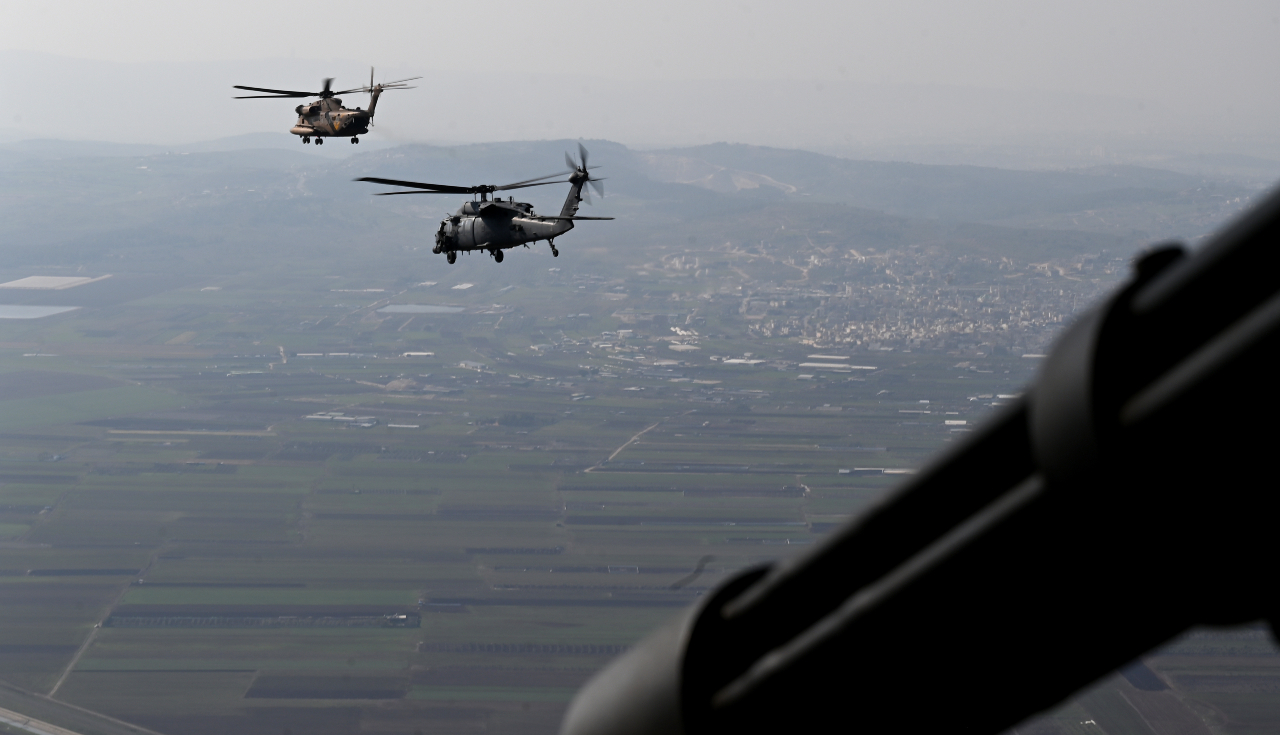What 50 Years of Wars in the Middle East Tell Us About Gaza

Published by The Lawfare Institute
in Cooperation With

Editor’s Note: The Gaza conflict is entering a new and fraught stage, as Israel prepares for a massive ground invasion. Amb. James Jeffrey of the Wilson Center examines past Israeli and U.S. experiences and warns that a Gaza invasion could prove cataclysmic, leading to a regional war.
Daniel Byman
***
Israel has made clear that it is facing an “unparalleled situation” following the Hamas attack and has announced two goals: destroy Hamas’s ability to again attack Israel and remove it from control of Gaza. These are feasible but very, very difficult. Achieving them will likely require a major ground operation inside Gaza and at least limited reoccupation of that area. In choosing them, Israel recognizes that Gaza remaining under the control of Hamas, able to launch new attacks of similar or greater destruction, poses an unacceptable long-term threat to Israeli security. Israel would be forced to tie down large numbers of their security forces to better secure the Gaza perimeter and hope that its frayed military deterrence can be reestablished. In the worst case, Gaza could be one of the fronts in a cataclysmic contest also involving Hezbollah in Lebanon, Syria, and Iran.
Understanding this point is essential in any analysis of possible ways forward and suggests that Israel’s stated goals are the best of bad alternatives. To see why, a look back at other major regional conflicts might help.
Israel’s Objectives
The Israeli goals delineate what most of the limited conflicts that have tormented the Middle East since the 1940s lacked: a clear military objective. In this case, that goal is the military and political destruction of Hamas, which likely would yield the desired political result, freedom from an existential threat from Gaza. However difficult that goal may be, and however pursuing it risks other threats, it is feasible for the Israeli military, assuming (as we should) that it will accept high losses among its troops.
Previous conflicts have also sought to drive out political-military authorities from entrenched locations. In 1990, the United States decided to mobilize a huge American force embedded in a global coalition to drive the Iraqi army from Kuwait. Six months later that goal was achieved. Again, in late 2015, facing the threat from the Islamic State’s expanding terrorist operations, President Obama shifted the objective from “degrading” the Islamic State to “destroying” it in Syria and Iraq. The U.S. military defined “destroy” as eliminating the Islamic State’s military capability to challenge security forces, hold terrain, and launch terrorist strikes over thousands of miles, notably into Europe. The Islamic State persists in Syria and Iraq as a network of terrorist cells, but the central mission of the campaign to defeat the organization was accomplished in 2019. What defined the success both in Kuwait and against the Islamic State was a clear, measurable mission that could be accomplished by military force. That is how Israel is thinking.
Preventing Horizontal Escalation
Intervention by Hezbollah, Syria (either government forces or pro-Iranian militias), or by Iran itself would vastly complicate any Israeli campaign against Hamas, as Hezbollah and Iran both have far greater military capabilities than Hamas. Israel’s massive mobilization of troops means that the security forces will not be caught by surprise by additional follow-up attacks, which might now be deterred by the increased Israeli troop presence on all of its borders. But if this deterrence fails, there is the potential for a dangerous escalation, with the probability highest when Israel starts its ground assault on Gaza. One precedent for successfully preventing such escalation is the Nixon administration’s action during the 1973 Yom Kippur War. After Israel had regained the initiative in that conflict, the Soviets put major airborne forces on alert to move to Egypt. The White House ordered an immediate alert just short of war for the entire U.S. military—more than 2 million troops. President Biden’s extremely strong statements were made to warn off Hamas’s partners. As he warned them on Tuesday, “To any country, any organization, anyone thinking of taking advantage of this situation, I have one word: Don’t. Don’t.” More convincing, though, was the deployment of two carrier battle groups and U.S. Air Force reinforcements.
The Nixon administration had earned deterrence credibility the hard way, defeating the North Vietnamese 1972 Easter Offensive and then bombing Hanoi to a cease-fire. Neither the Biden administration, nor any other recent administration, has had that level of “street cred” in the Middle East. One way to confirm U.S. readiness to defend Israel if necessary would be to deploy now U.S. Army Patriot batteries with their American crews to Israel, as the United States did in 1991. In terms of legal justification, there are hundreds of thousands of Americans in Israel, and tragically we have seen proof they are at risk.
Civilian Casualties
Much of the Middle East is already criticizing Israel for the inadvertent yet inevitable civilian casualties attendant to Israel’s bombing of Hamas targets in Gaza. The issue is increasingly squeezing out coverage of Hamas atrocities in the U.S. media, and we are seeing a contradiction in administration statements. The president has repeatedly stressed total support to Israel, most dramatically telling Israeli Prime Minister Benjamin Netanyahu that “we’ve got your back.” But he also said that he told Netanyahu to “operate by the rules of war.”
If Israel was deliberately targeting civilians, like Hamas did, this chastisement would be more on target, but that is obviously not the case. In fact, in some cases Israel is even warning residents of areas that it is about to strike. But cautions like Biden’s have broad, uncertain import, as the “rules of war” are unclear regarding nondeliberate civilian casualties and drift into the vague territory of “proportionality” and “humanitarian law.” For example, Secretary of State Antony Blinken told the press while on his trip to Israel that “it’s so important to take every possible precaution to avoid harming civilians.” The absolute term, “possible,” in contrast to the usual diplomatic term, “feasible,” could lead to criticism of essentially any Israeli military response, however justified, that generates inadvertent civilian losses.
This is not the first time the United States has warned Israel about civilian casualties. Condoleezza Rice writes that, as civilian casualties from Israeli strikes soared during the 2006 Lebanon War, she told Prime Minister Ehud Olmert, “Get it over with.” But these warnings show a double standard. A decade after that war, first the Obama and then the Trump administration authorized the use of tremendous firepower to take down Islamic State forces embedded in Mosul and Raqqa. The result was civilian casualties in the thousands but also the destruction of the Islamic State as a territorial state and army. One solution is the safe zone in southern Gaza that Israel has proposed. That option needs to be fleshed out, with safe passage assured and more time to move, but a similar approach has provided refuge for more than 3 million internally displaced people in Idlib, Syria.
Reactions in the Arab World
The Arab states are appalled by what Hamas has done and are no friends of the Iran axis, which includes Hamas and Hezbollah. Thus, unlike in 1973, they have no geostrategic motivation for dramatic action such as an oil embargo. But during the 2006 Lebanon War, rising Arab civilian casualties stirred popular unrest in Arab states, which shifted their positions from quietly supportive of Israel to condemnation. History could well repeat itself, with Israeli military action already halting progress on Israeli-Arab state reconciliation, and continued fighting generating ever more condemnation of Israel and pressure on Washington.
Strategic Outcomes From 50 Years of Regional Wars
The closest an Arab leader has come to condemnation for mass slaughter from across the region has been Syrian President Bashar al-Assad. Yet Russia stood by him when he was facing collapse. While Syria is still an abattoir, Russia gained much prestige by living up to its commitment. And the United States, by backing Israel to the hilt in 1973 in the face of initial regional condemnation and the oil embargo, changed the strategic geography of the region, all in all much for the better.
All situations are different, but on Gaza the United States and Israel are all in, the first to defeat Hamas and the second to deter its partners. Even if Israel does not destroy Hamas fully, it can deny it indefinitely the capability to strike Israel, and that will also be a victory. And if Iran and its partners back down out of fear of the United States, that will reverberate not just in the Middle East but far beyond in this time of great power competition. As would the opposite scenario. The whole world is watching.



.jpg?sfvrsn=cb803a66_6)

